KANTEMIR
GESCHICHTE DES OSMANICHEN REICHS
Demetrie KANTEMIR (Dimitri KANTEMİROĞLU)
Hamburg, Christian Herold, 1745
A book written by the famous Romanian historian and writer Dimitri Kantemiroğlu about the history of the Ottoman Empire after his betrayal during the Moldavian Voivodeship, when he took refuge in Russia in 1711 and became the chief advisor to the Russian Tsar, and contains vital political and military advice to the European states to defeat the Turks. This book, which Queen Caroline of England did not leave her bedside, caused most of the prejudices against the Ottoman Empire in the West.
Demetrie Kantemir (1673 – 1723) is known in Turkey as (Dimitri Kantemiroğlu). The lord of the Moldavian province of the Ottoman Empire, a historian and writer of Romanian origin, is a music expert who made great contributions to Classical Turkish Music during his time in Istanbul. Dimitri Kantemiroğlu was born on October 26, 1673 in the town of Silişteni within the borders of today’s Romania, which was known as the Moldavian province of the Ottoman Empire at that time. His father, Konstantin Kantemir, was an illiterate gentleman who had a say in Moldavian politics. When Dimitri Kantemiroğlu was 14 years old, the Ottoman Empire appointed his father to the principality of Moldavia. In accordance with tradition, the young Dimitri was sent to Constantinople as a hostage in 1687. Continuing his education in Istanbul, Dimitri learned Ancient Greek and Latin Culture and Byzantine Orthodox Culture at the academy of the Greek Orthodox Patriarchate, and Ottoman, Persian and Arabic languages in Enderun. He established close relations with Ottoman political and cultural circles. He gained information about the politics, institutions, ethnic situation of the Ottoman Empire, and Islamic religion and art, as well as following the humanism movements in the West. His interest in music continued in Istanbul. He became interested in Turkish music. He learned about this music from violinist Ahmet Çelebi of Edirne, and the tambur from Tamburi Angeliki. During the reign of Ahmet II, he was admitted to Enderun as a student. The importance of Kantemiroğlu as a composer is that he notated many works with the notation system he created. In 1693, Dimitri Kantemiroğlu succeeded his father as the principality of Moldavia, but was not allowed to return to his country due to suspicions about him. As a result of his insistence on the palace, he was able to return to his country only in 1750 as the lord of Moldavia. The first thing he did after returning to his country was to send a trusted man to the Russian Tsar to ask for the Principality of Moldavia for himself and then for his children indefinitely, with the support of Russia. When Tsar Peter the Great accepted this offer, a secret treaty was signed between them in Lutsk, today’s Ukraine. Dimitri Kantemiroğlu, together with some boyars, raised the flag of rebellion against the Ottoman rule (July 1711). When Peter the Great was defeated in the Ottoman-Russian War in the same year, Kantemiroğlu was dismissed from the Moldavian principality. He was replaced by Fenerli Greek Nikola Mavrocordato. Kantemiroğlu, who had to flee to Russia to save his life, spent the rest of his life in Russia. Kantemiroğlu, who continued to write while in Russia, prepared a book on Ottoman history in Latin between 1714 and 1716. It has been argued that this book caused most of the prejudices about the Ottoman Empire in the West. The book contained political and military advice to the European states that was vital for defeating the Turks. Tsar Peter the Great ordered the book to be translated into Russian as soon as possible. The book was later published in England in 1734, in France in 1743, and in Germany in 1745. It is said that Queen Caroline of England kept this book by her bedside for a long time. Kantemiroğlu’s legacy has been viewed in Turkey from both positive and negative aspects. While his contributions to Turkish music and culture were praised during his time in Istanbul, his extremely hostile attitude towards the Ottoman Empire after leaving Istanbul was the subject of criticism̧is. The book contains full-page engravings of 16 Ottoman sultans and the writer Dimitri Kantemiroğlu.
(ONLINE AUCTION
Rumen asıllı ünlü tarihçi ve yazar Dimitri Kantemiroğlu’nun Boğdan Voyvodalığı sırasında Osmanlı’nın zayıfladığını düşünerek ihaneti sonrası, 1711’de Rusya’ya sığınıp Rus Çarı’nın başdanışmanı olduğu dönemde yazdığı Osmanlı tarihi hakkında ve Avrupa devletlerine Türkleri yenilgiye uğratmak için hayati önem taşıyan siyasal ve askeri öğütler içeren kitabı. Dönemin İngiltere Kraliçesi Caroline’in başucundan ayırmadığı bu kitap, Batı’da Osmanlı Devleti aleyhine oluşan ön yargıların büyük kısmına sebep olmuştur.
Demetrie Kantemir (1673 – 1723), Türkiye’de (Dimitri Kantemiroğlu) olarak tanınır. Osmanlı Devleti’ne bağlı Boğdan eyaletinin beyi, Rumen asıllı tarihçi ve yazar, İstanbul’da yaşadığı süre boyunca Klasik Türk Müziği’ne büyük katkılarda bulunmuş bir müzik uzmanıdır. Dimitri Kantemiroğlu 26 Ekim 1673 tarihinde o zamanlar Osmanlı Devleti’ne bağlı Boğdan eyaleti olarak bilinen bugünkü Romanya sınırları içindeki Silişteni kasabasında doğdu. Babası Konstantin Kantemir okuma yazma bilmediği halde Boğdan siyasetinde söz sahibi olmuş bir beydi. Dimitri Kantemiroğlu 14 yaşına geldiğinde Osmanlı Devleti babasını Boğdan beyliğine atadı. Geleneğe uyularak genç Dimitri 1687 yılında rehin olarak İstanbul’a gönderildi. Öğrenimini İstanbul’da sürdüren Dimitri, Rum Ortodoks Patrikhanesi’ndeki akademide Antik Yunan ve Latin Kültürüyle Bizans ağırlıklı Ortodoks Kültürünü, Enderun’da ise Osmanlıca, Farsça ve Arapça dillerini öğrendi. Osmanlı siyaset ve kültür çevreleriyle yakın ilişki kurdu. Osmanlı Devleti’nin siyaseti, kurumları, etnik durumu ve İslam dini ve sanatına ilişkin bilgiler edindiği gibi Batı’daki hümanizma hareketlerini izlemeyi de ihmal etmedi. Müziğe olan ilgisi İstanbul’da devam etti. Türk müziğine merak sardı. Kemani Edirneli Ahmet Çelebi’den bu müziğe ait bilgiler, Tamburi Angeliki’den ise tambur öğrendi. II. Ahmet zamanında Enderun’a öğrenci olarak alındı. Kantemiroğlu’nun besteci olarak önemi, oluşturduğu nota sistemiyle pek çok yapıtı notaya almış olmasındandır. Dimitri Kantemiroğlu 1693 yılında babasının yerine Boğdan beyliğine getirildi ama hakkındaki şüpheler üzerine ülkesine dönmesine izin verilmedi. Saraya yaptığı ısrarlar sonucu ancak 1750 yılında Boğdan beyi olarak ülkesine dönebildi. Ülkesine döndükten sonra yaptığı ilk iş, güvendiği bir adamını Rus Çarı’na göndererek Rusya’nın desteğiyle Boğdan Prensliği’ni süresiz olarak kendisi ve sonra da evlatları için istemek oldu. Çar Büyük Petro bu teklifi kabul edince aralarında bugünkü Ukrayna’nın Lutsk kentinde gizlice bir antlaşma imzalandı. Dimitri Kantemiroğlu bir kısım boyarla birlikte Osmanlı yönetimine isyan bayrağı açtı (Temmuz 1711). Aynı yıl çıkan Osmanlı Rus Savaşı’nda Büyük Petro yenilince Kantemiroğlu Boğdan beyliğinden azledildi. Yerine Fenerli Rum Nikola Mavrokordato getirildi. Canını kurtarmak için Rusya’ya kaçmak zorunda kalan Kantemiroğlu hayatının geri kalan kısmını Rusya’da geçirdi. Rusya’dayken yazarlığa devam eden Kantemiroğlu 1714-1716 yılları arasında Osmanlı tarihi hakkında Latince bir kitap hazırladı. Batı’da Osmanlı Devleti konusunda oluşan ön yargıların büyük kısmına bu kitabın sebep olduğu ileri sürüldü. Kitap, Avrupa devletlerine Türkler’i yenilgiye uğratmak için hayati önem taşıyan siyasal ve askeri öğütler içermekteydi. Çar Büyük Petro kitabın bir an önce Rusça’ya çevrilmesi için emir verdi. Kitap daha sonra 1734 yılında İngiltere’de, 1743 yılında Fransa’da, 1745 yılında da Almanya’da yayımlandı. İngiltere Kraliçesi Caroline’ın uzun süre bu kitabı başucundan ayırmadığı söylenir. Kantemiroğlu’nun bıraktığı mirasa Türkiye’de hem olumlu, hem olumsuz yönlerinden bakılmıştır. İstanbul’da yaşadığı dönemde Türk müziğine ve Türk kültürüne yaptığı katkılar övgü toplarken, İstanbul’dan ayrıldıktan sonra Osmanlı Devleti’ne karşı takındığı aşırı düşmanca tutum eleştiri konusu olmuştur. Kitabın içinde 16 Osmanlı padişahının ve yazar Dimitri Kantemiroğlu’nun tam sayfa gravürleri yer almaktadır.
(ONLINE MÜZAYEDE)
$ 5.500,00


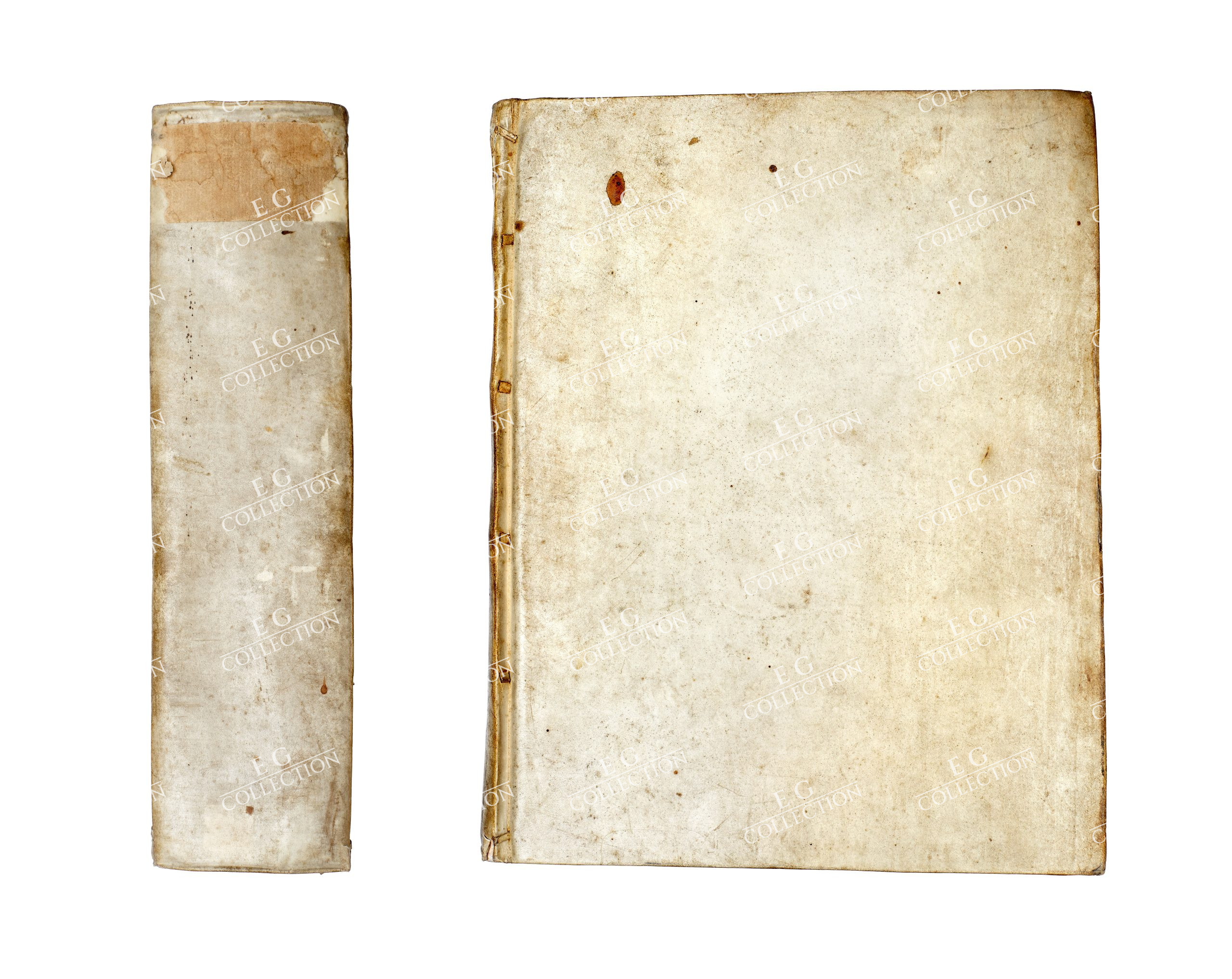
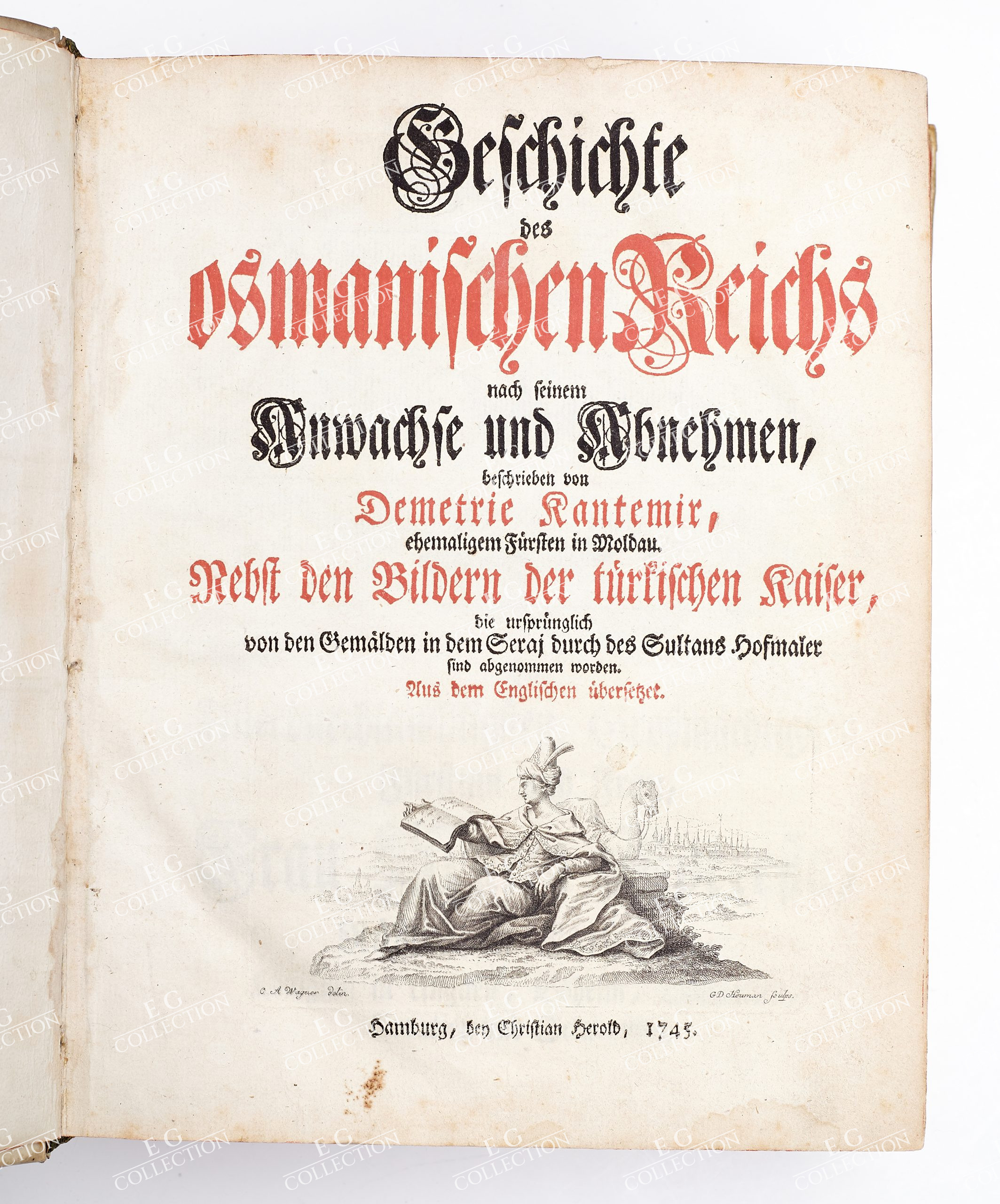
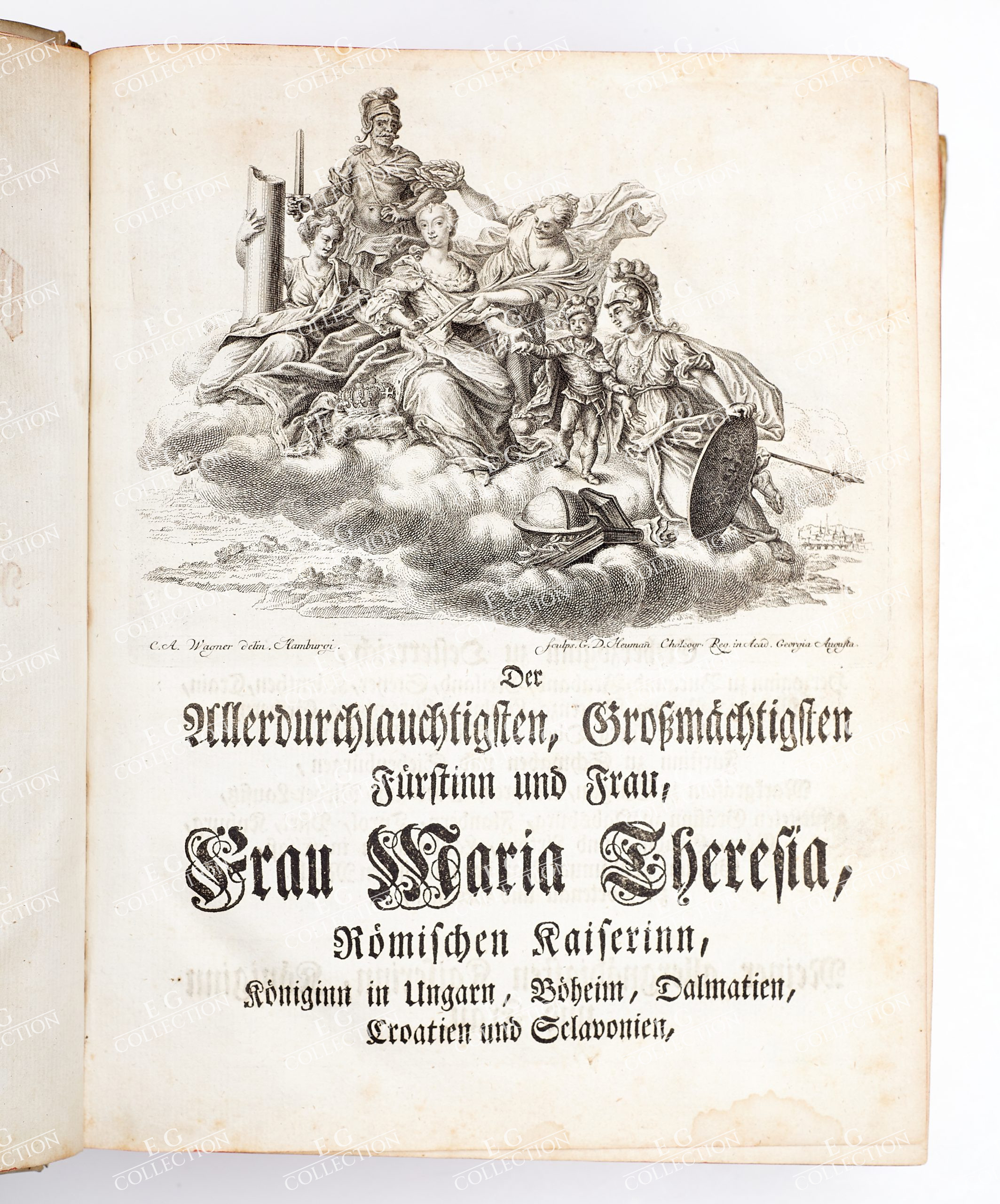
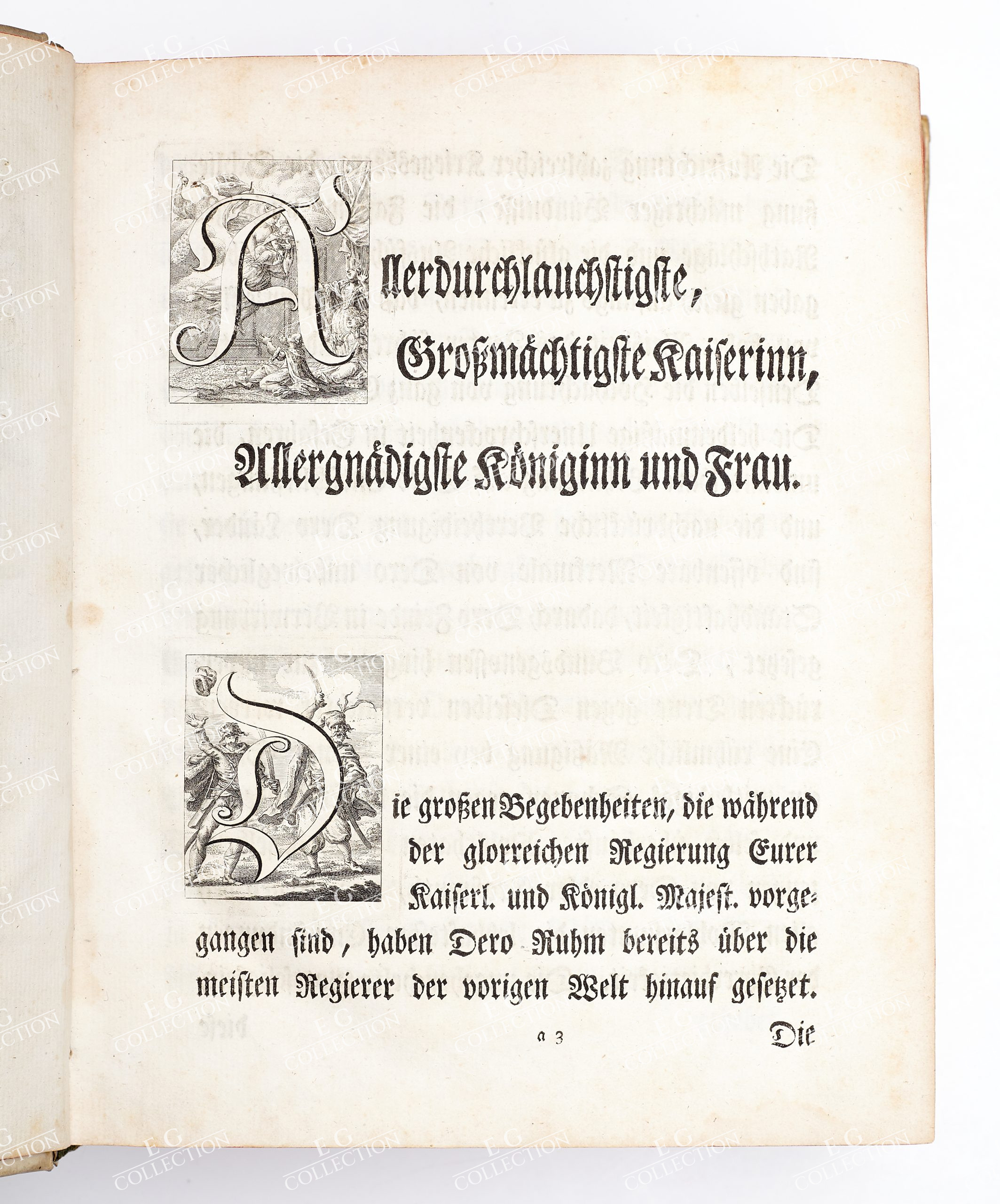
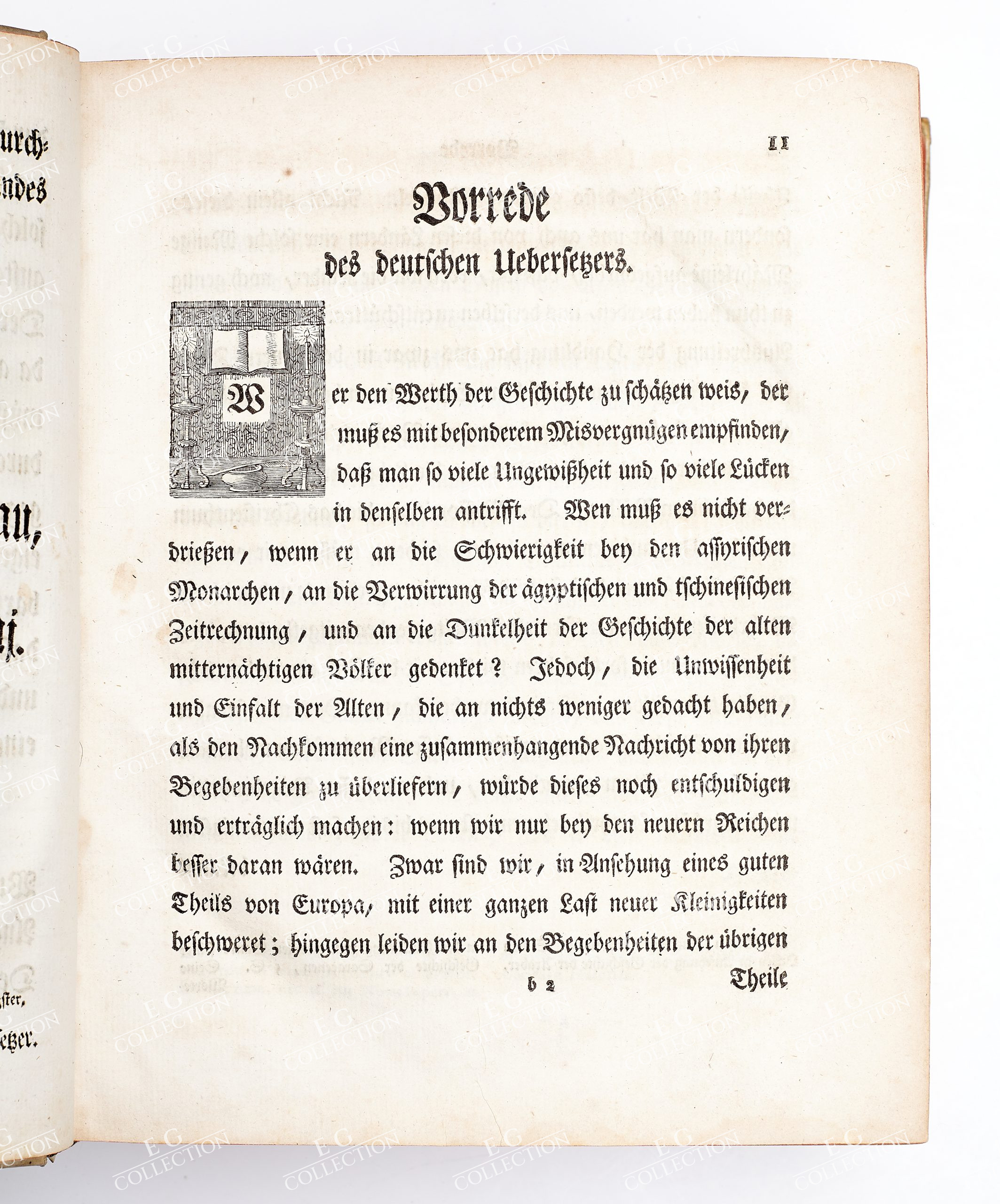

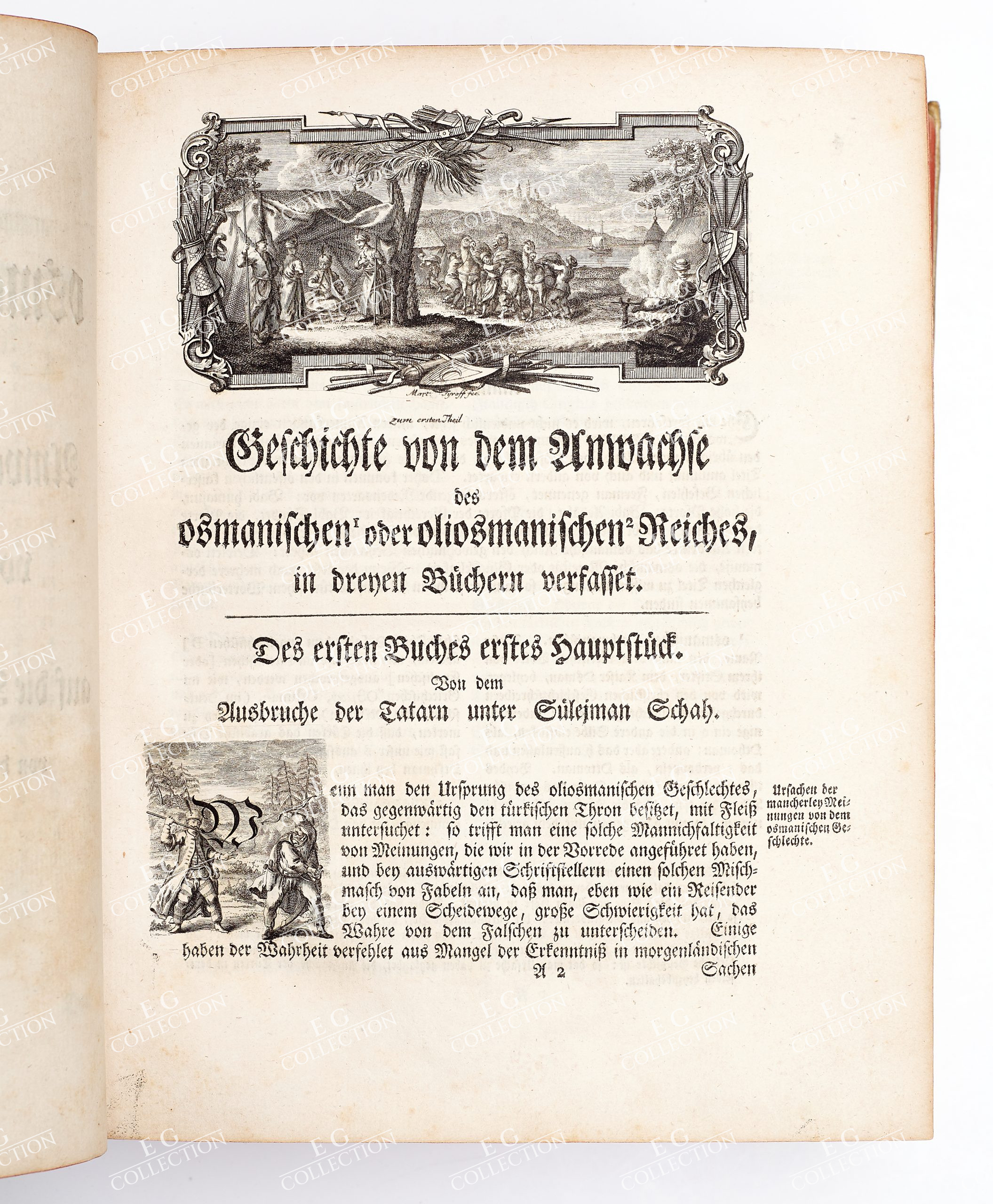

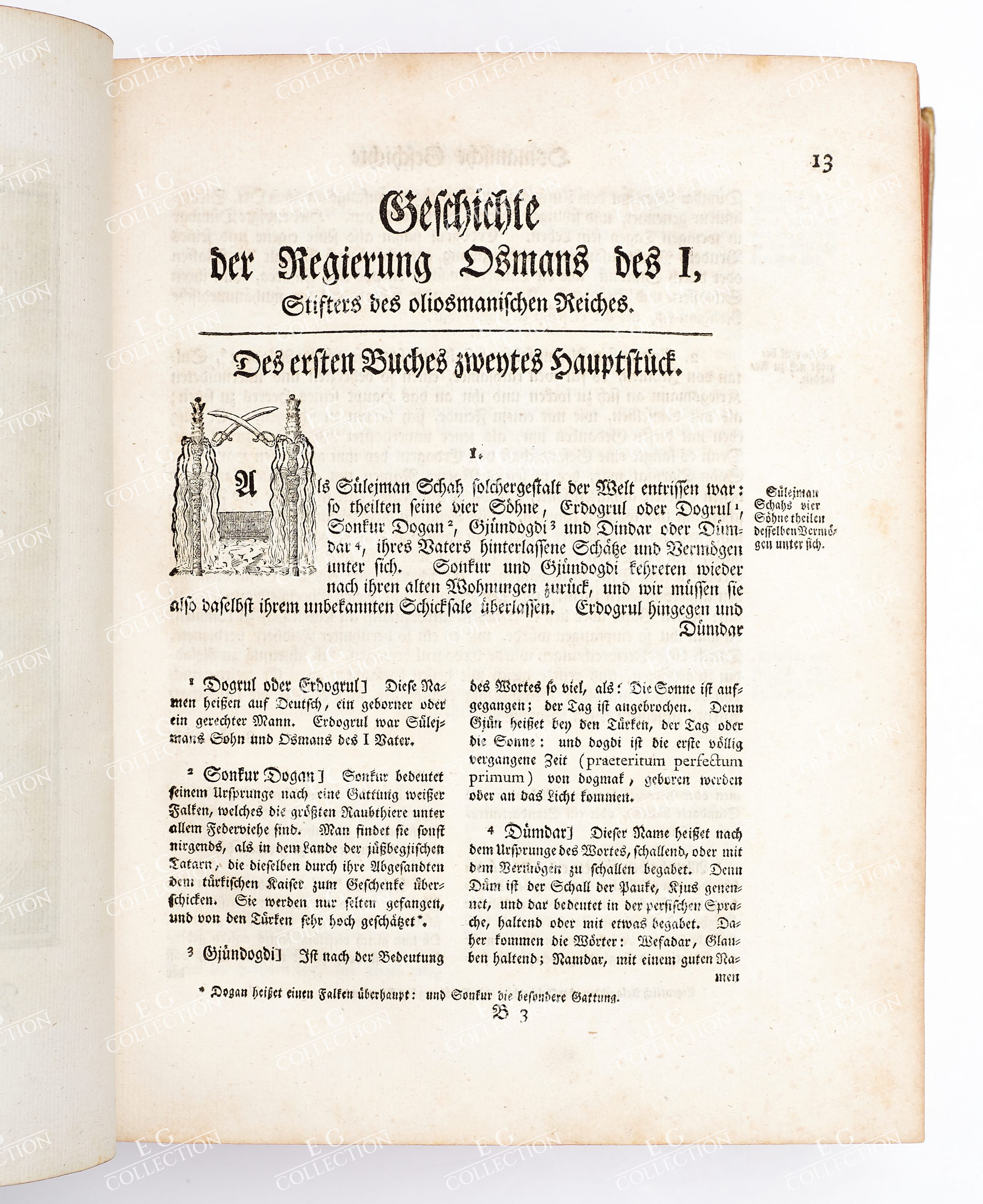
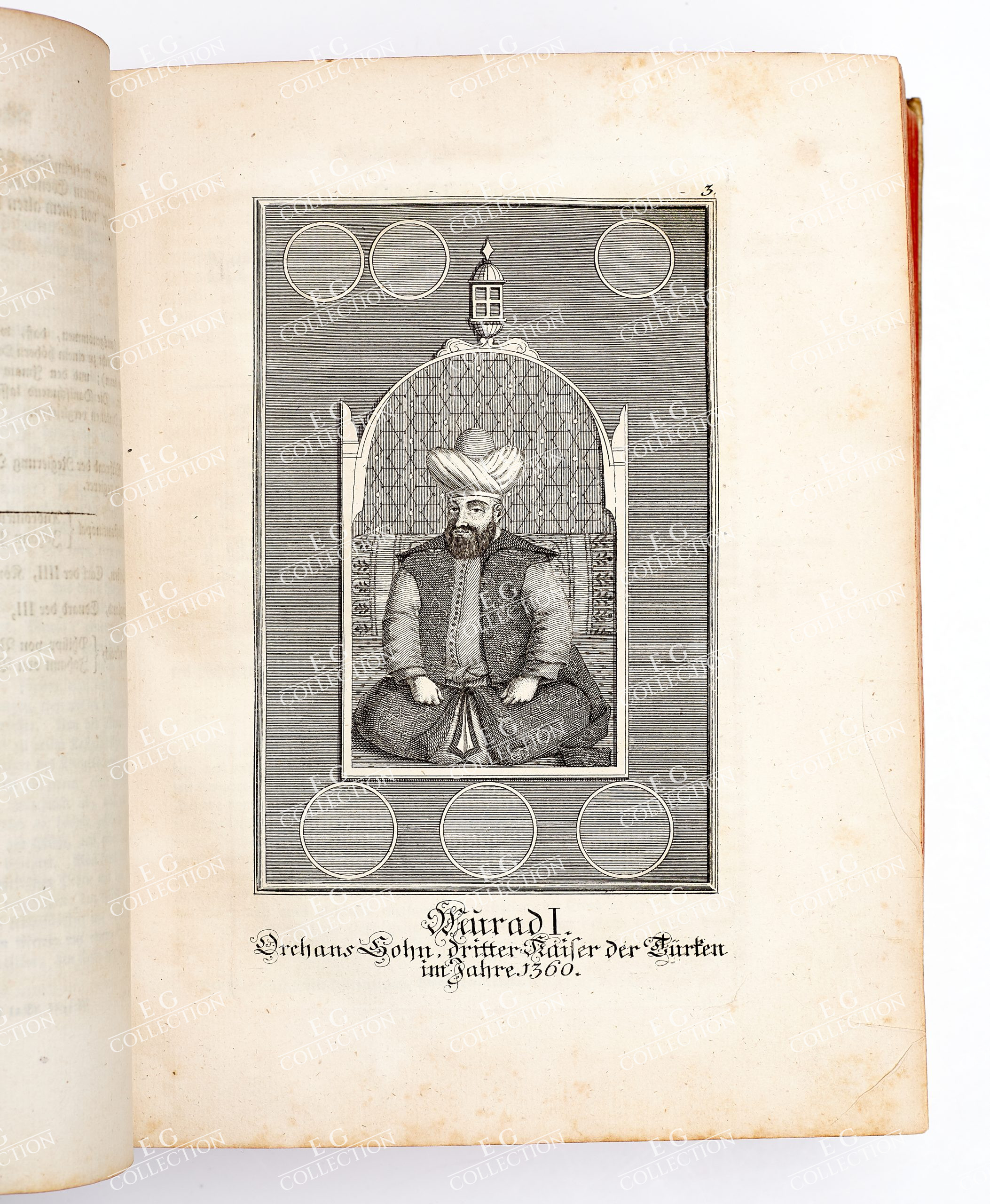
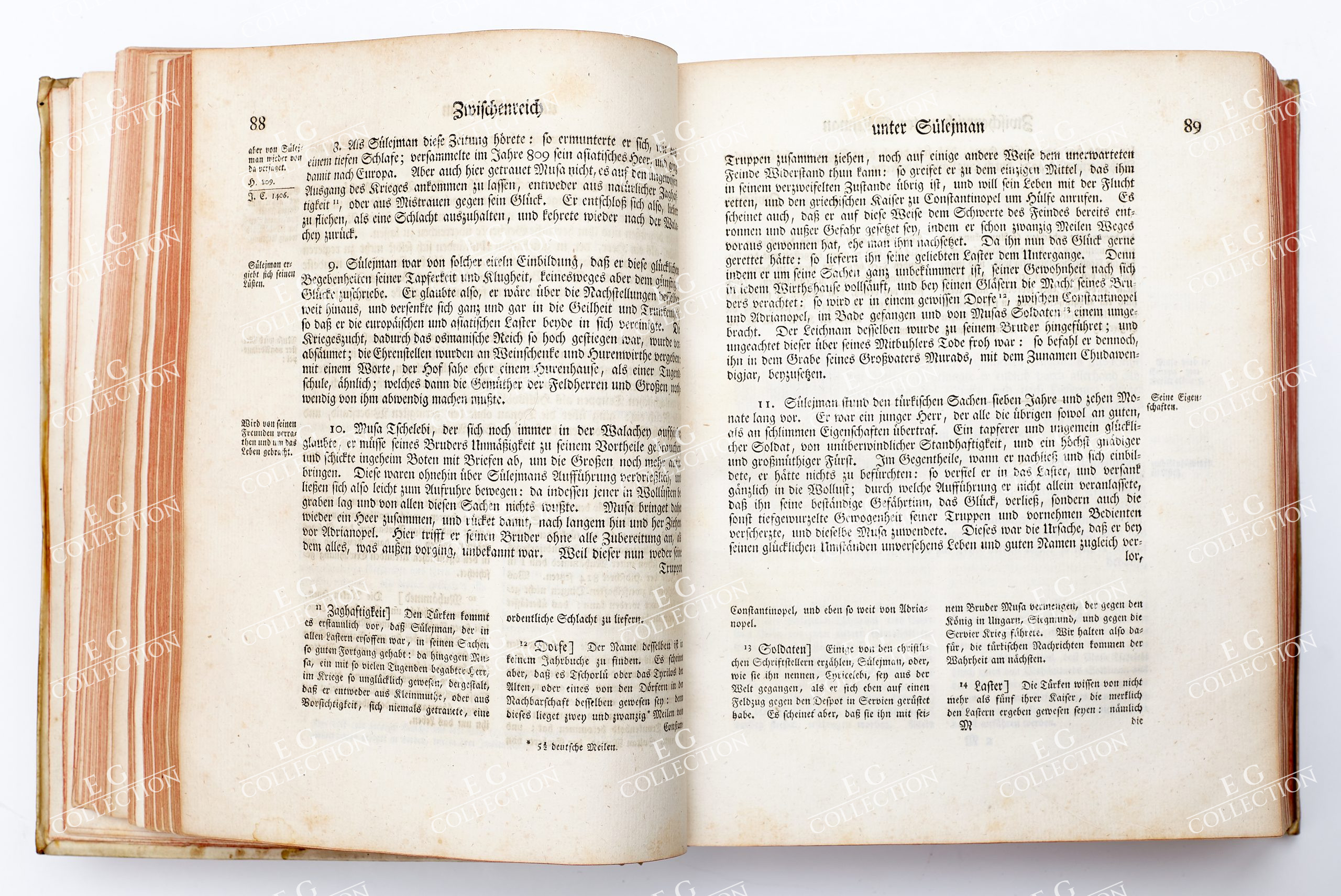
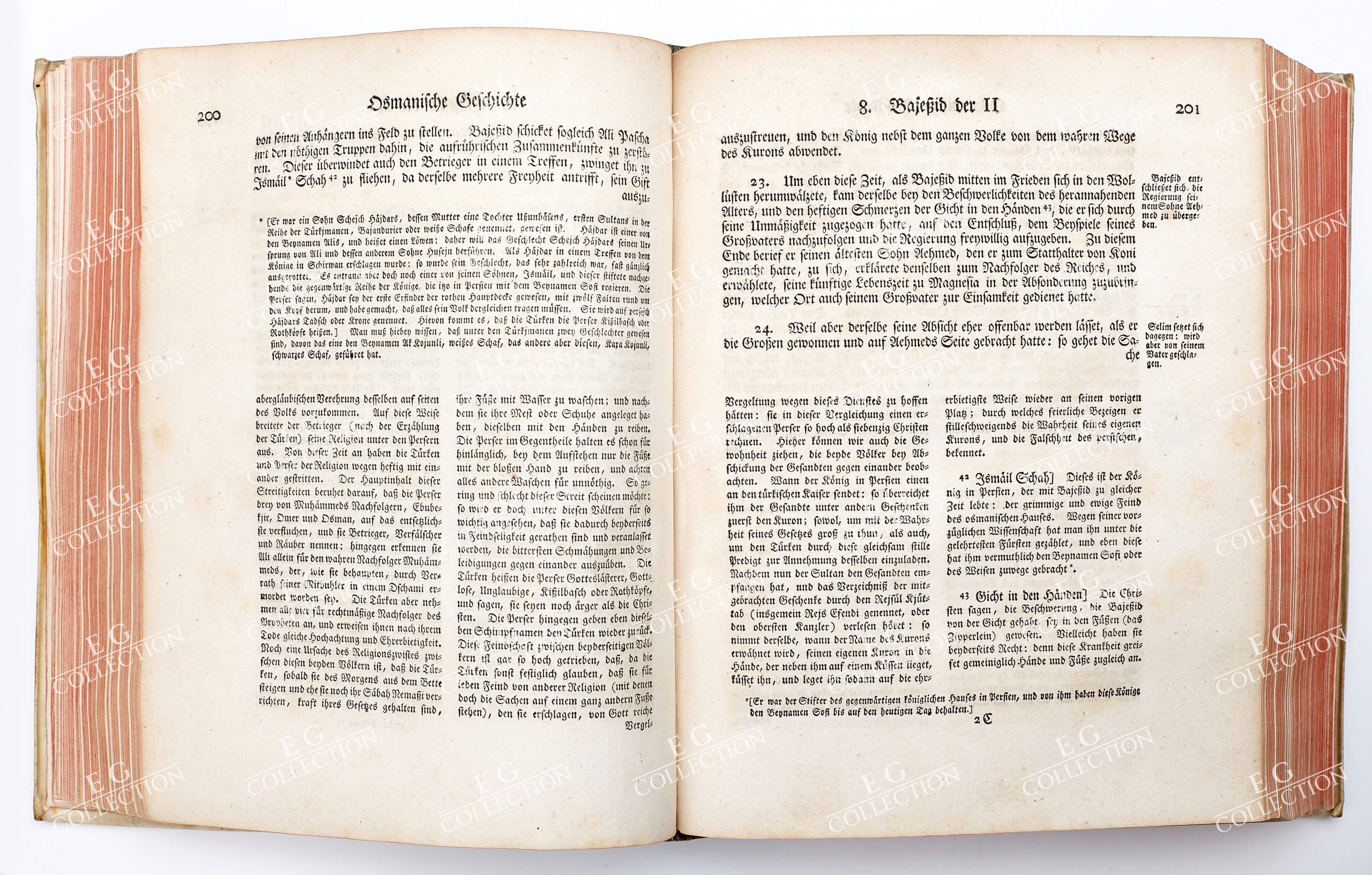

 No products in the cart.
No products in the cart.